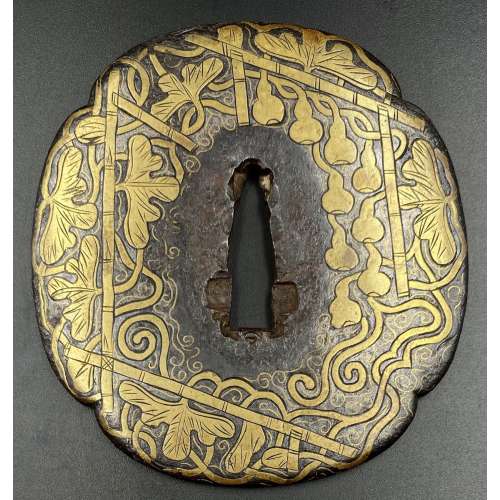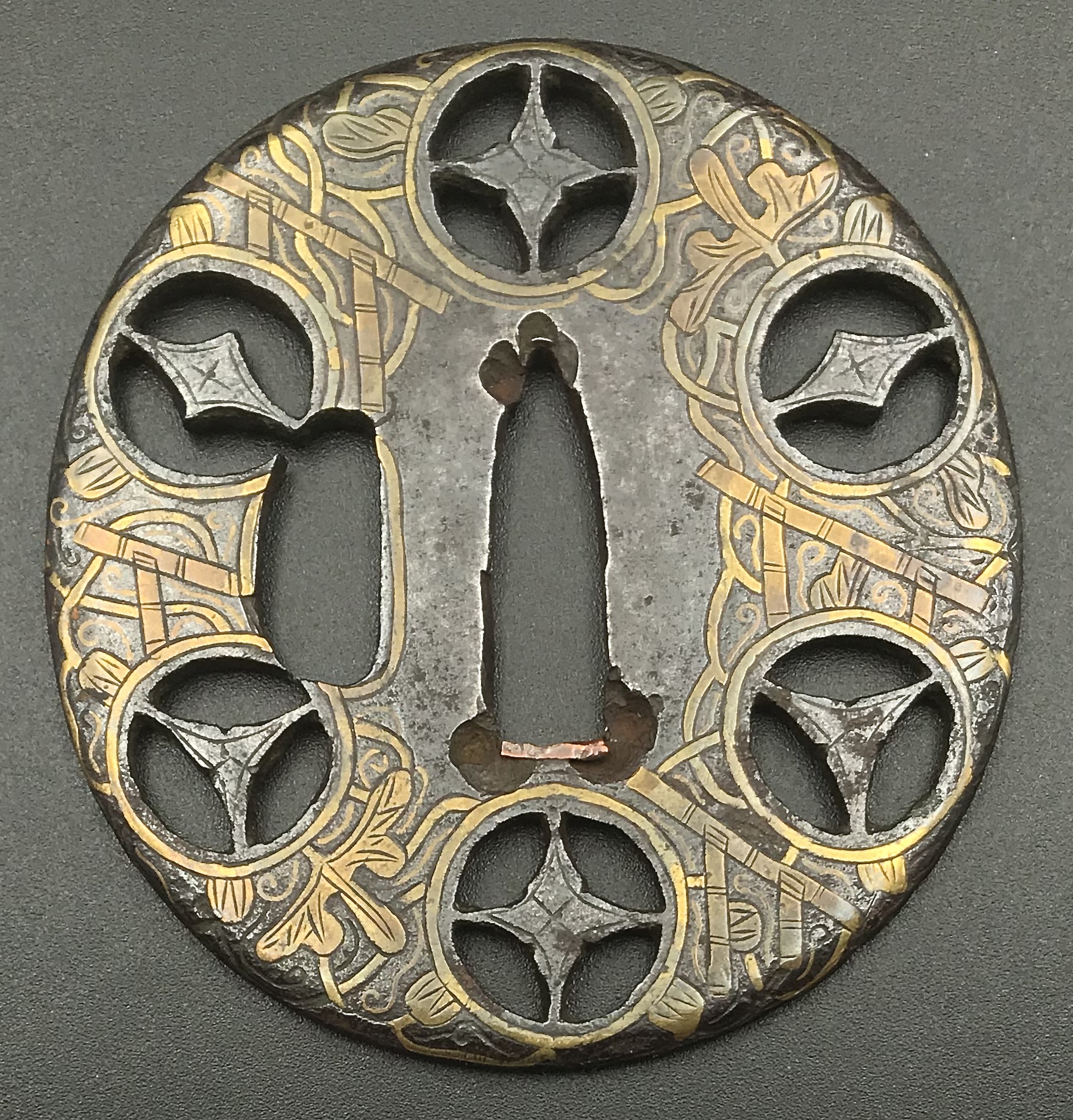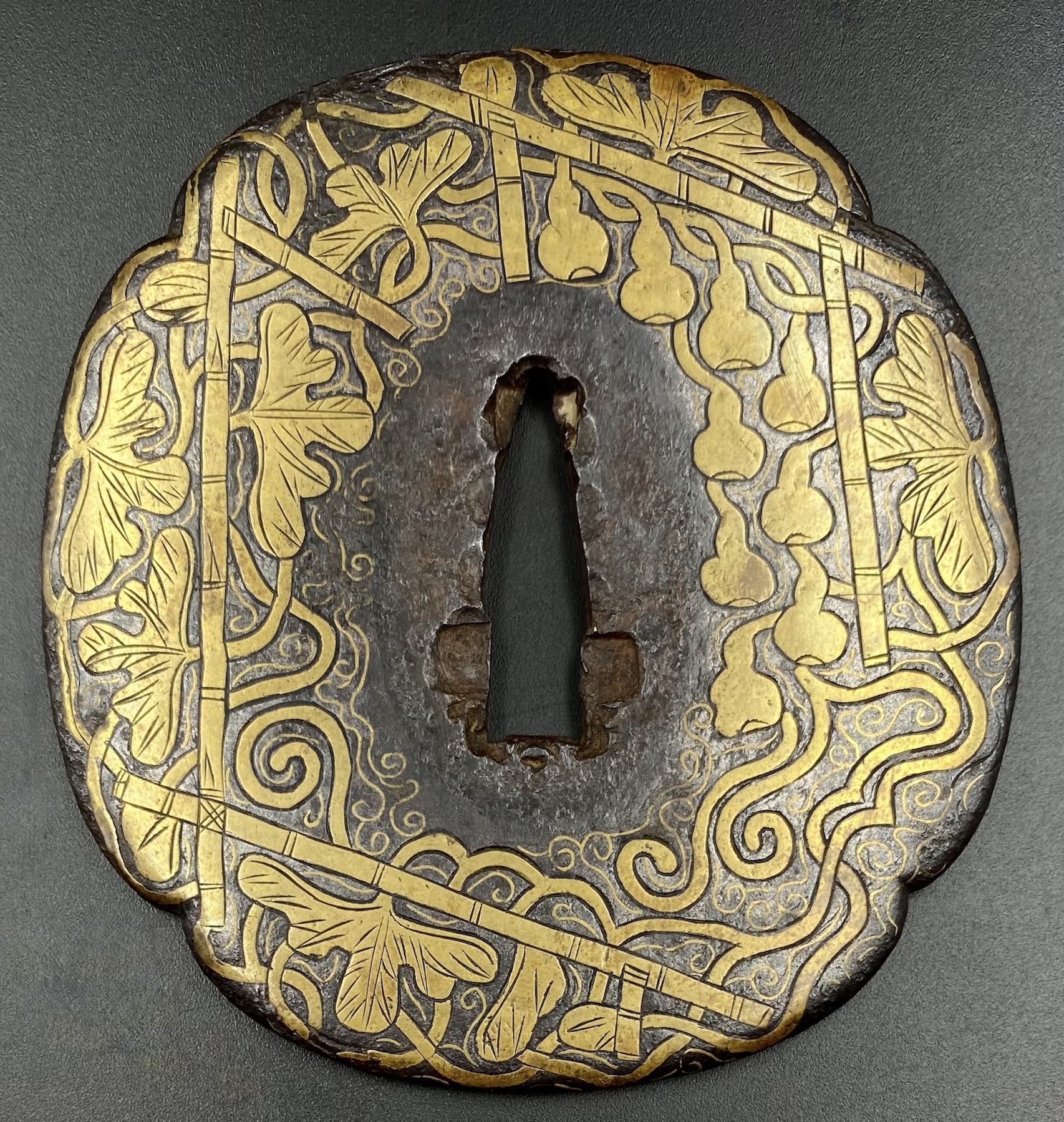The so-called
Yoshirō-tsuba [与四郎鐔] with an iron plate of mokkō form densely decorated with floral arabesque and adorned with eight pierced, chiselled and inlaid brass roundels and signed on both sides 'Koike Yoshirō Izumi no Kami Naomasa'.
Four of the roundels are pierced and have geometrical designs representing flowers (e.g. wood sorrel) or snowflakes. Four others are solid and represent family crests; on one side: Mulberry (kaji) – mon of the
Matsunaga clan [松永氏], Bamboo Grass (sasa) – mon of the
Takenaka clan [竹中氏]), Wild Geese (kari) – mon of the
Shibata clan [新発田氏]), and Pine Needles (matsuba); on the other side: Nine Stars (kuyō) – the
Hosokawa clan [細川氏], Paulownia (kiri) – the
Toyotomi clan [豊臣氏]), Bamboo Leaves (take) – the
Minamoto clan [源], and Seven Treasures (shippo) –
Izumo Genji clan [出雲源氏].
Hitsu-ana obliterated with a
nanako-treated pewter plug. Brass with rainbow patina.
Artist: Koike Izumi no Kami Naomasa (Japanese, active late 16th – early 17th century).
The Momoyama or early Edo period, end of the 16th to the first half of the 17th century (1574-1650).
Size: 81.7 x 78.8 x 4.3 cm.
Provenance: Dr. Kazutaro Torigoye. Special thanks to Markus Sesko for providing the translation of
hakogaki.
Hakokaki lid (outside):
小池与四郎 – Koike Yoshirō
Hakokaki lid (inside):
銘曰小池与四郎 – Mei’etsu: Koike Yoshirō – Signed: Koike Yoshirō
和泉守直正 – Izumi no Kami Naomasa – Izumi no Kami Naomasa
木瓜形 鉄地 – Mokkōgata, tetsu-ji – Lobed shape, of iron
真鍮据紋象嵌 – Shinchū suemon-zōgan – with brass suemon-zōgan inlay
縦二寸七分横二寸六分 – Tate ni-sun shichi-bu, yoko ni-sun roku-bu – Height 8.2 cm, width 7.9 cm
右正真也 – Migi shōshin nari – Above described object is authentic
昭和廾九年八月十一日 – Shōwa nijūkyūnen hachigatsu jūichinichi – August 11, 1954
草堂「花押」– Sōdō + kaō – Sōdō [pen name of Torigoye Kazutarō, 鳥越一太郎] + monogram
Ref.: (1) Tsuba Geijutsu-Ko by Kazutaro Torigoye, 1960; (2) Tsuba. An aesthetic study. By Kazutaro Torigoye and Robert E. Haynes from the Tsuba Geijutsu-kō of Kazataro Torigoye. Edited and published by Alan L. Harvie for the Nothern California Japanese Sword Club, 1994-1997,
p. Yoshirō, 4. See also
Yoshirō tsuba.















